
 Copyright 2019 by Ellen Deakin All rights reserved. No part of this book may be reproduced in any manner without the express written consent of the publisher, except in the case of brief excerpts in critical reviews or articles. All inquiries should be addressed to Racehorse Publishing, 307 West 36th Street, 11th Floor, New York, NY 10018. Racehorse Publishing books may be purchased in bulk at special discounts for sales promotion, corporate gifts, fund-raising, or educational purposes. Special editions can also be created to specifications. For details, contact the Special Sales Department, Skyhorse Publishing, 307 West 36th Street, 11th Floor, New York, NY 10018 or .
Copyright 2019 by Ellen Deakin All rights reserved. No part of this book may be reproduced in any manner without the express written consent of the publisher, except in the case of brief excerpts in critical reviews or articles. All inquiries should be addressed to Racehorse Publishing, 307 West 36th Street, 11th Floor, New York, NY 10018. Racehorse Publishing books may be purchased in bulk at special discounts for sales promotion, corporate gifts, fund-raising, or educational purposes. Special editions can also be created to specifications. For details, contact the Special Sales Department, Skyhorse Publishing, 307 West 36th Street, 11th Floor, New York, NY 10018 or .
Racehorse Publishing is a pending trademark of Skyhorse Publishing, Inc., a Delaware corporation. Visit our website at www.skyhorsepublishing.com. 10 9 8 7 6 5 4 3 2 1 Library of Congress Cataloging-in-Publication Data is available on file. Cover and interior design by Antonia Orrego Requena Cover photography by Pilar Castro Evensen Print ISBN: 978-1-63158-449-7 E-Book ISBN: 978-1-63158-450-3 Printed in China 
CONTENTS



INTRODUCTION
Welcome to Llama Crafts ! Im so happy that you are here and so excited to share these llama craft projects with you. Im guessing you love llamas as much as I do. If so, youre in luck! There are all sorts of llamas in this bookcute llamas, elegant llamas, funny llamas, and cuddly llamasllamas that are so full of personality! Ive had some help along the way from many talented friends.
Weve had a lot of fun putting together these projects for you, so I hope you enjoy using this book as much as we enjoyed creating it! Have a llama-tastic day,  The projects in this book are rated from easy to advanced and there is also an indication of how long each project will take. You can tell which project has a template too.
The projects in this book are rated from easy to advanced and there is also an indication of how long each project will take. You can tell which project has a template too. 


SO WHAT IS A LLAMA?
A llama is like a camel without a hump, but it also has a woolly coat.
A llama is domesticatedit isnt wild and always belongs to someone. Where do llamas live? Llamas come from the high mountains of the Andes in South American countries. Most llamas live in or near the Andes. Other countries now breed llamas for their wool, to use as pack animals on ranches, and even as guardians for herds of sheep.
Another reason for bringing llamas to other countries is llama therapy. Grown-ups and children can get a lot of help from contact and friendship with a llama! Why do people keep llamas? In the past and in the mountains they were used as pack animals. They are big and strong with flat backsperfect for loading up with a pack of goods for transport through mountain landscapes! Today, llamas are kept and bred for their wool. Their wool is warmer than sheep wool and less itchy. It is naturally hypoallergenic so less likely to cause allergies. Why do we love llamas? Could it be their funny faces? They look quite human in some ways, but their big eyes and banana ears make them look surprised all the time.
Also, they are woolly in an untidy, comical way. Even their movements are comical, although they are fast and powerful as well. They are super intelligent and can learn routines. They live in close families like us. 
MEET THE LLAMAS COUSINS!

Llamas are domesticated and their closest cousin is the alpaca. Then there are their wild, undomesticated cousins.
Guanacos are a bigger, wild forebear of the llama and vicuas are more closely related to the alpaca. Neither of these are exported to other countries, so they only live in South America. Do you know the difference between a llama and an alpaca? Alpacas are smallerabout half the size of a llama. They have straight, spear-shaped ears rather than the llamas banana ears, and a slightly humped back which stops them from being used as pack animals. Llamas have a longer face. An alpacas wool is even finer than that of a llama.
Have you heard of the Guanaco and the Vicua? They are mainly wild mountain animals. They can run up very steep slopes, and are very beautiful to watch in movement. Guanacos are bigstanding approximately between 5 and 6 feet. Their colors are shades of reddish brown, whereas vicuas vary from cinnamon brown to white. 
CRAFT MATERIALS
LLAMA YARN AND FABRIC CRAFTS Fabric in various colors Ribbon Colorful felt Yarn for pom-poms Embroidery thread for colorful tassels Embroidery needles Twine A sharp pair of scissors Colorful fabric paint Cushion stuffing

LLAMA PAPER CRAFTS Tissue paper Glue stick White liquid glue Cardboard Colored card stock Contact film Colored pens and pencils Acrylic paint Paint brushes Clear tape and masking tape Foam sheets Glitter


PROJECT 1:
HAPPY LLAMA STAMPERS

Make these easy stamps using foam sheets from your local craft store. Create your own wrapping paper, wall art, garlands, greeting cards, and more! The effect is wonderful, a little rustic, and very versatile.
Look after your stamps and you can use them over and over again. YOU WILL NEED: Craft foam sheets A ballpoint pen Scrap cardboard Scissors White glue Paint and paintbrushes 

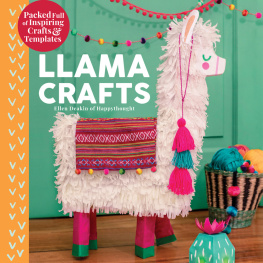

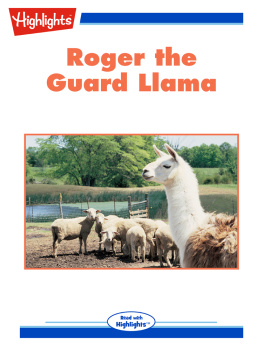
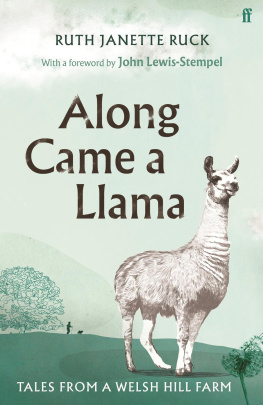
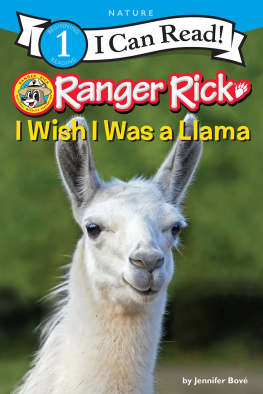
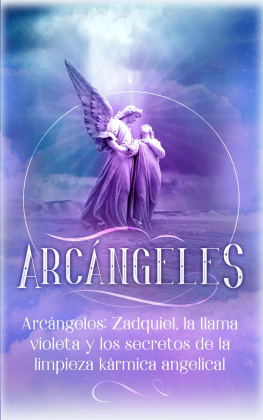

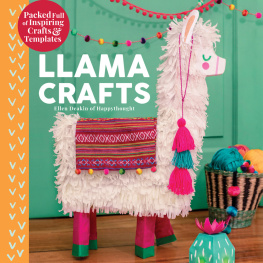

 Copyright 2019 by Ellen Deakin All rights reserved. No part of this book may be reproduced in any manner without the express written consent of the publisher, except in the case of brief excerpts in critical reviews or articles. All inquiries should be addressed to Racehorse Publishing, 307 West 36th Street, 11th Floor, New York, NY 10018. Racehorse Publishing books may be purchased in bulk at special discounts for sales promotion, corporate gifts, fund-raising, or educational purposes. Special editions can also be created to specifications. For details, contact the Special Sales Department, Skyhorse Publishing, 307 West 36th Street, 11th Floor, New York, NY 10018 or .
Copyright 2019 by Ellen Deakin All rights reserved. No part of this book may be reproduced in any manner without the express written consent of the publisher, except in the case of brief excerpts in critical reviews or articles. All inquiries should be addressed to Racehorse Publishing, 307 West 36th Street, 11th Floor, New York, NY 10018. Racehorse Publishing books may be purchased in bulk at special discounts for sales promotion, corporate gifts, fund-raising, or educational purposes. Special editions can also be created to specifications. For details, contact the Special Sales Department, Skyhorse Publishing, 307 West 36th Street, 11th Floor, New York, NY 10018 or .



 The projects in this book are rated from easy to advanced and there is also an indication of how long each project will take. You can tell which project has a template too.
The projects in this book are rated from easy to advanced and there is also an indication of how long each project will take. You can tell which project has a template too. 



 Llamas are domesticated and their closest cousin is the alpaca. Then there are their wild, undomesticated cousins.
Llamas are domesticated and their closest cousin is the alpaca. Then there are their wild, undomesticated cousins. 
 LLAMA PAPER CRAFTS Tissue paper Glue stick White liquid glue Cardboard Colored card stock Contact film Colored pens and pencils Acrylic paint Paint brushes Clear tape and masking tape Foam sheets Glitter
LLAMA PAPER CRAFTS Tissue paper Glue stick White liquid glue Cardboard Colored card stock Contact film Colored pens and pencils Acrylic paint Paint brushes Clear tape and masking tape Foam sheets Glitter 

 Make these easy stamps using foam sheets from your local craft store. Create your own wrapping paper, wall art, garlands, greeting cards, and more! The effect is wonderful, a little rustic, and very versatile.
Make these easy stamps using foam sheets from your local craft store. Create your own wrapping paper, wall art, garlands, greeting cards, and more! The effect is wonderful, a little rustic, and very versatile. 